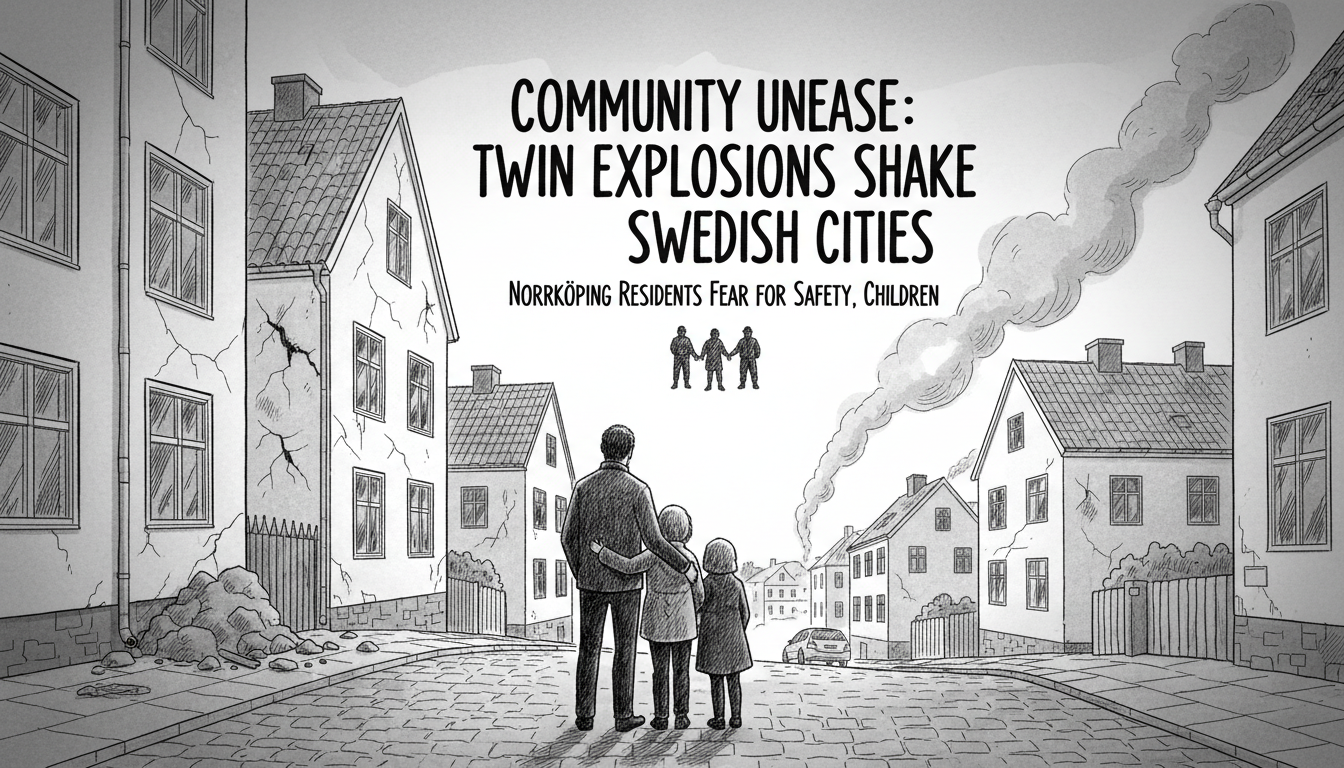Residents in Norrköping's Sandbyhov neighborhood are grappling with fear after two powerful explosions shook their community. The first blast occurred around 11 PM Sunday in a multi-family building, followed by another explosion hours later in the nearby Ljura district. Both incidents caused substantial property damage and left psychological scars.
Local teacher Hugo Källström expressed concern about the impact on children. He said the experience would be difficult for young students to process. Hearing explosions is not something children should grow up with, he noted during a conversation about the incidents.
Several residents described feeling the pressure wave from the blast move through their bodies. One neighbor compared the sound to a concrete slab hitting the ground. The proximity to two schools added to community worries, with children stopping to look at the damaged building entrance on their way to class.
Police confirmed three arrests on Monday morning, including one minor under fifteen years old. The investigation continues as authorities work to determine the cause and circumstances behind both explosions.
This incident highlights broader challenges in Swedish urban safety and community security. Sweden has faced increasing concerns about organized crime and explosive-related incidents in recent years. The pattern reflects deeper societal issues that extend beyond individual neighborhoods.
International residents and newcomers to Sweden might find such events particularly unsettling. The Nordic country typically projects an image of safety and order. These explosions disrupt that perception and raise questions about urban security trends.
The location near schools adds another layer of concern for parents and educators. School environments represent safe spaces for children, and violent incidents in close proximity understandably generate anxiety. Communities must now balance normalcy with appropriate security measures.
Local authorities face the dual challenge of investigating these specific incidents while addressing broader community concerns. Restoring public confidence requires both immediate action and long-term strategies. The coming days will reveal how effectively institutions respond to these parallel demands.
Norrköping represents a typical medium-sized Swedish city facing modern urban challenges. The city's industrial heritage and diverse population create a complex social fabric. Understanding these local dynamics helps contextualize how communities respond to security incidents.
Swedish society continues to navigate the balance between openness and security. These explosions test that balance and prompt difficult conversations about community safety. The response will likely influence approaches to urban security across Swedish municipalities.

